47 eCommerce Online Selling Tips To Catch & Keep Buyers For Life!
by Admin Joe
Published – Sept 29th 2017
Updated – Dec 3rd 2017
How great would it be to give your boss the finger and then suddenly decide to start up your own online selling business from home. If we’re being honest, it will never be as simple or easy as that last sentence made it look.
I didn’t exactly go this way for me. Sadly, I never got to tell my boss what I thought about him but I did quit my job to start my own online selling business from home. It was a struggle at first but I did eventually manage to carve out some moderate success with time so I know that it is doable.
You might not want to hear this but these things take time, hard work and planning if you want any chance of success. That is where this big, long 5,000+ word monster of mine comes in. Don’t let it scare you off, there is a lot of value to be had here.
You may already be in the process of selling stuff online. I’m no mind-reader so who am I to know? If you’re in this boat then I’m sure there will still be some useful nuggets for you to gain from this list.
I’ve been selling items online for the past few years as both a private and business seller. It’s very possible to craft your own eCommerce business online as long as you work hard for it.
2016 online retail sales added up to almost £150 billion and that’s just in the UK alone (yikes). It’s increasing at a staggering rate every year.
This means that there is a very big slice of the cake there with your name on it. All you have to do is be willing to pick this money up off the table.
![]()
“If you do build a great experience, customers tell each other about that. Word of mouth is very powerful.” – Jeff Bezos (Amazon Founder)
The smiling man above who I just gave a shout out to knows a thing or two about eCommerce (or buying and selling online, to the uninitiated). If you’re not familiar with Mr Bezos then the main thing to know about him is that he’s stinking rich.
I’d be willing to bet that this is something you aspire to or at the very least want to make a modest living from selling online.
Anyway, enough chit-chat. Here are a few pointers I’ve learned over time about online selling that should give your profits a big boost. Let’s get started.

1. Limit Purchases Per Buyer
“What the hell, man! I thought this was a serious article?” Well, hold your horses friend and allow me to explain while you catch your breath.
It might reach the point where a single buyer is buying up a lot of your inventory. On the surface, this might sound awesome but really think about it for a moment. If one person is buying big quantities from you, then other buyers might not be getting a fair crack of the whip, so to speak.
I’ve experienced this before with my business and it may just be that the same buyer simply really likes what you have to sell. This is why you need to judge this on a case by case basis so not to turn away the wrong customers.
You may also suspect that they could be buying lots of your inventory for a specific reason. This may be because they believe it is cheap enough to resell by themselves. Which begs the question, why am I even bothering if i my prices are that low?
Whichever the case may be, you might want to block or put restrictions on that buyer.
2. Offer Discounts
I bet you’ve seen stores do this all the time in your everyday life. Who hasn’t? You can persuade customers to buy more than one product by offering eCommerce promotions and discounts.
Examples of this might be 3 for 2, buy one get one free or buy this product and get a fancy little hat for your pet iguana thrown in.

Your profits will increase if you are delivering multiple items together to the same buyer. It works by sending all items in one package thus saving money on shipping.
3. Get a PayPal Account
PayPal is one of the most popular eCommerce payment methods currently on the internet. Both buyers and sellers put a lot of trust in it as opposed to any alternatives. As a seller, it is wise to set up a PayPal business account in order to accept payments. It’s easy to sign up, all you really need is an email address.
4. Create Message Templates
Buyers may initiate correspondence with you before and after the sale. A lot of these questions are very similar and sometimes the same. This can be a drag so it may be wise to set up templates. It will save you having to type out long-winded messages every time there are similar queries.
I’ve dealt with this before by copying and pasting the same basic information into a message while at the same time changing a few things around like the buyer’s name and what the product is. It should save you a lot of time if you do this but be sure to check everything is right before sending.
Try to have a template prepared for every eventuality with online selling. These can be instances such as a package being lost in the mail or any refunds and returns.
5. Provide Lots of Information
A full and detailed selling description is really important for every product that you put up for sale. You want to aim to pre-answer every conceivable question that a customer might want to ask about the item in question.
Complete descriptions are vital, the buyer needs to know anything and everything. This can be what size this shirt is to how many times your wife has persuaded you not to wear it out of shame. I don’t recommend selling ugly garments of clothing in the first place but hopefully you understand my point.
It’s better to give too much information rather than too little so be as pedantic as you like.
6. Charitable eCommerce Donations
I can already tell that you’re a generous and empathetic soul without me even having to ask. If your eCommerce business is doing particularly well then some marketplaces will allow you to donate your sales profits to charity. You could even offer to partially give a percentage of profits to charity.
This may even encourage customers to shop with you if they know that at least some of their money is going to a good cause so there are benefits for you personally.
The Red Cross is a worthy cause that I personally have contributed to before via my business profits. C’mon guys, the world needs more compassion so give this some thought. I can also stop nagging you so everybody wins!
7. Inject Humorous Anecdotes
I like to inject my own cringe-worthy brand of comedy into my posts (for better or worse) so why not apply the same logic to your listings.
If you have a funny story to tell about the item then you can add this to the description. It should add a human touch and may make buyer warm to you.
A great example is this hilarious and brutally honest eBay listing for a used car. The context here is that a father was trying to get rid of it on behalf of his careless teenage son.
There have been eCommerce listings out there that have gone viral. These have then gone on to make a lot of money because they have personality and humor injected into them.
[bctt tweet=”Choose a simple listing layout that can be viewed clearly in portrait format for mobile users” via=”no”]
8. Precision Pricing
Pricing the items that you’re selling online can be a dangerous balancing act. The price needs to be high enough to make a profit good enough for the time that you will spend working. At the same time, it has to be low enough for enough buyers to consider purchasing.
If you’re selling clothes online then you may be selling your inventory all well and good up until you are left with a handful of colors and sizes that aren’t all that popular.
Sort of like that weird maroon color that makes the buyer’s stomachs churn just from the sight. You might have had the rotten luck of this coming with the others as part of a collection when you originally sourced them.
There isn’t much you can do about this other than relisting and chipping away at the price until you find a buyer.
If your product isn’t selling as many units as you would like then you could try lowering your price a fraction. If you’re processing more eCommerce orders than you can handle then raise the price a little bit.
When working day to day, if I ever sell more units than I have time to process then I will usually relist with a 10-20% increase in price. This slows down the flow of orders normally and gives me the needed room to breathe so why not try it on for size.
Like I said before, if you’re not getting enough business then do the exact opposite.
9. List Related Items
If you’ve had success selling a specific product then it would help you a lot to list something very similar alongside it. This way you are selling things within the same category.
For example, you might be selling mp3 players that are flying off the shelves. The next step would be to sell headphones to go with it so that the same buyers might show an interest. The temptation might be too much for the buyers to bear MUAHAAHAHAHA. It’s all about picking a certain niche and mastering it.
I mainly sell clothes with my business so I might place listings for fashion accessories and other clothing in plain view.
Offline retail stores do this all the time. If you look in a shop window you might see a mannequin wearing a sweater that you really want. The dummy might also be modelling sunglasses and carrying a bag to finish off the outfit.
10. Long Listing Duration
A lengthy listing is advantageous when you have lots of people stubbornly watching the item but refusing to buy GRRRR! They may need additional time to think their buying decision through. More days clearly means more selling exposure.

11. Check Product Authenticity
“There seems to be something suspicious about this ‘Goochey‘ handbag but i can’t quite put my finger on it.” I may have privately thought this to myself in the past but then again not all counterfeits are this blinding obvious.
Any idiot can tell the difference between ‘Armani’ and ‘Ermoaney’ but then again some fakes go out of their way to be quite convincing to the untrained eye.

You will need to verify the authenticity of your item if you’re thinking of putting it up for sale. This is especially relevant if your selling antiques or luxury, high-end brands. If you’re not 100% sure that it’s not fake or counterfeit then don’t bother listing it.
I would say that there is a higher chance of buying counterfeit goods if you buy them from new and untested suppliers. For this reason, I mostly purchase from established/trusted wholesalers that have a good reputation such as Chinavasion or Lovely Wholesale (get 10% off any order with this link)
It would be a good move to get you inventory authenticated so that you can prove what is real and what is fake. There are companies out there that will do this for you such as the global product authentication service. Some services also give a certificate of authenticity as evidence.
You will be glad that you took this step if the buyer ever happens to falsely claim that a real product is counterfeit. If you don’t have this evidence then the buyer can easily game a refund.
12. Climb the Search Results Page
Getting on the first page of any website is a dream of any marketer because it means that we’re getting the spotlight over our competitors.
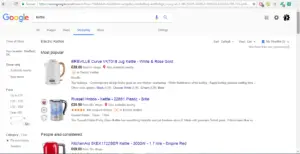
Placing highly on the search results pages of most online retail sites depends on several things. These elements include:
- low item/shipping prices
- correct category
- unique product
- reputation
- high quality photos
- performance reports
- matching the buyer’s search term (probably most importantly)
If we’re talking specifically about auction listings, then auctions that are ending the soonest will likely be at the top of the search results.
13. Install Selling Analytics Programs
You should think about improving your impression to click-through ratio if you want to get a good eCommerce search ranking.

There are analytics programs you can set up that will let you view this. If you want to monitor your performance in the arena of sales then you can always try Terapeak. It’s your lucky day as you will get a 7 day free trial with this link giving you a head start which is very useful.
This analytics program will show you data from your eCommerce business and from there you can make improvements.
If you run your own eCommerce website then your best bet might be linking it up to a Google Analytics account.
14. Contact before Cancellation
Being human, I’ve made plenty of online selling mistakes before that have meant that I have had to cancel orders. This usually comes down to silly things like running out of inventory although these errors have been valuable lessons. Fail upwards, that’s what I say!

You should contact the buyer personally if you decide to cancel an eCommerce order. This way they will be more understanding and less likely to give you poor feedback if you’re lucky.
There is nothing wrong with cancelling an order if you lose the item or if it gets damaged. However, there is a good chance the buyer will be frustrated and it could ultimately affect your seller rating so be careful to avoid it.
15. Look at your Competitors’ Selling Prices
Don’t be afraid to be a little bit nosy and check out your rival sellers to see if they are selling the same thing. By doing this you can gauge the right price to slap on your product.
You can see from this what the approximate eCommerce market value of the item is. You can also see what they’re doing differently from you.
Take into consideration the sellers based in China. In some circumstances, they may undercut rivals and sell online at rock-bottom prices in order to make minor profits. They might also use unethical selling practices like employing sweatshop workers so there isn’t much you can do about this.
Having said that, I have purchased inventory from China based suppliers who are very reliable and conduct business with good morals.
16. Calculate eCommerce Expenses
Don’t hate me for this but now I’m going to use the very tired, clichéd and overused expression that is “you need to spend money to make money”. I only use this because it is so relevant to eCommerce business costs. You need to factor in:
- inventory price
- postage
- packaging
- shipping
- sales fees

You need to know all of this in order to calculate how much to sell online for and how much profit you will make. If your overhead costs surpass your turnover then it obviously won’t work as a eCommerce business or make any money.
17. Work out your pay-per-hour
Let’s say a single order takes you 1 hour to fully process, for example. If this is true then you will want to ensure that the amount of profit that you make each time will at least equal minimum wage for one hour’s work.
If it doesn’t then it probably isn’t worth doing. You wouldn’t work a conventional day job for less than minimum wage so why would you lower your standards when working for yourself?
It’s better to sell a small handful of items at a higher price. This is much better than running yourself off your feet processing hundreds of orders at a low price.
You don’t want to carve into your own profit margins. Additionally, you want to avoid taking up more of your time than necessary as this would be counterproductive.
18. Save Space & Help the Environment
Selling your old, unused stuff has three main benefits. Firstly, you will be helping out the environment if you choose to sell your second-hand goods. This is a vast improvement on throwing them in the trash (and then eventually landfill).

Secondly, even if you don’t make big money from your eCommerce sales, at least you’ll have newly freed up space in your home.
The attic is a common place where people like to dump items they no longer use. In my time selling, I’ve managed to empty out my attic almost entirely. I have then used some of the money to turn it into a completely new renovated room.
Lastly, you can finally see the back of that creepy old porcelain doll that always stares at you from the corner of the room. The curse will then be passed on to the buyer, may god help them.
19. Keep eCommerce Tax Records
I totally agree with you, tax is boring AF. However, it has to be done if you want to make life easier. It’s better to record online selling transactions as you go throughout the tax year.
In my case, I record all my sales data on paper and then stored it in a folder for each year. Alternatively, you can do it digitally on a spreadsheet using Microsoft Excel or something similar. You can learn much more about recording tax information on spreadsheets with handy tools such as Spreadsheet123.
Conversely, if you’re not smart you’ll be scrabbling around for numbers like a drunk raccoon and panicking at the last second on deadline day. Planning ahead and having everything readily available for your tax return will be a great weight off your mind.

20. Place Brand Names Front & Center
Remember to add brand names to the title of your eCommerce listings whenever you’re selling something online. In this materialistic world, people would be willing to fork out more cash for ‘Sony speakers‘ rather than just ‘speakers‘.
21. Move with the Seasons
Make the most of the holidays and events throughout the year. You will want to sell seasonal products online during a time when there will be a high demand for them. For example, you would obviously want to sell chocolate Easter eggs during Easter which will drive up eCommerce profits and sales.
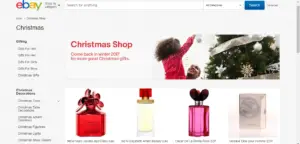
The same can’t be said about products being listed out of season, however this is common sense. What kind of messed up ‘Homer Simpson’ character would sell Christmas trees in the middle of Summer?
You may have a large amount of unsold festive items leftover after the Christmas holidays have ended. With this in mind, the best thing to do is wait it out for a year and then start selling them again when the same season comes around.
22. Don’t be Afraid to Sell Broken Goods
Before you jump to conclusions, this isn’t what it looks like (I promise). By this I don’t mean shaft buyers and knowingly sell faulty goods that are supposed to work. What I really mean is selling broken items online that are clearly labeled as “broken”.

It’s very possible to sell faulty/broken electronic goods as there is a market for this. The buyers who you can expect to show interest are people who need spare parts. In addition, there are specialists who fix devices to sell on for personal use or profit.
I did this not long ago with a laptop that broke down and I managed to get a surprising amount of money for it.
It doesn’t even have to be anything electronic. You can sell damaged or worn down furniture that can then be bought and refurbished back to a good standard.
23. Let the Buyers Change their Minds
You should be fair and make a point to allow buyers the opportunity to cancel or amend their eCommerce purchase if they make a mistake while ordering.
This can happen anytime between when purchase until when you dispatch the item. Obviously, they can’t change anything if you have already sent the package off for delivery unless yourself or they invent a time machine.
24. Send Confirmation of the Sale
It’s good practice to send a confirmation email after the customer has made an order to acknowledge that it has gone through properly. If you don’t keep the buyer updated then they may worry that an error has occurred during the order.
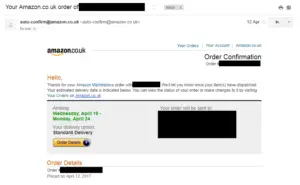
25. Implement Keywords
Fill your listings with plenty of relevant keywords and search terms/phrases like ‘paperback’ or ‘non-fiction’ if you’re selling a book. This is in order to optimize your content for search engines so that more people can view your eCommerce listings.
You can find out more about what your buyers really want with tools like Clever Gizmos and learn more about using keywords to improve your profits and sales.
26. Provide Friendly Customer Service
If you go above and beyond with customer service then buyers will thank you for it. Furthermore, they should give you their return custom and showing you off to their peers.

They might say something similar to what follows – “Hey, you should check out Kevin who sells electrical goods. I bought a great laptop from him last week. Sure, he’s a bit weird and has a strange onion fetish but even so, I still highly recommend him.”
If you really make people feel appreciated like friends then they will be loyal to your business and continue buying from you.
27. Beef up Website Security
You have to make sure your online security is up to scratch if you’re selling on your own eCommerce website.
The last thing you want is ‘Joe Scumbag’ hacking into your site and potentially defrauding all your lovely customers. If you are selling with an established platform (someone else’s site) then this isn’t much of a worry.
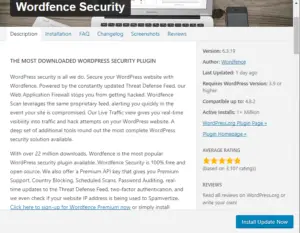
There are a few good free security plugins such as WordFence if you have a WordPress website. I use the very same plugin to protect this website you’re on right now. I would also consider McAfee antivirus software which is always useful to have.
If the worst comes to the worst then you could end up with stolen credit card numbers and then you will be given a large share of the blame.
28. Say “Thank You”
You need to be like Apu from ‘The Simpsons’ after the transaction has finished. A simple “Thank you, come again” can go a long way and can mean a lot to the customer. As I’ve already said, If you treat them like a friend then they will reward you with their loyalty to your brand and good word of mouth.
29. Bundle Items Together
If you’re really struggling to sell your items online and everything else that you’ve tried has failed then there is one more thing. Selling your remaining inventory together as a bundle or a job lot might be the way to go. Some buyers see more value if you re-purpose your inventory as a large collection.
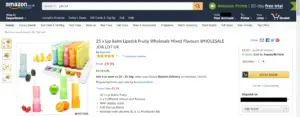
I’ve done this before when I’ve had a hard time selling certain items individually. I sold them all together and managed to break even. You may scoff but this was a great result for me considering that I probably would have lost money if i didn’t take this route.
In this sense you kind of switch roles and become a wholesaler as your prospective buyers will likely be other sellers looking to sell the items on. Who knows, the eventual buyer (and presumably seller afterwards) might have more luck with the items than your good self.
30. Include Misspelled Words
You might have more luck if you add common misspellings to your eCommerce listings. This might sound like really bad advice for chumps (from an even bigger chump) but just think about it for a second.
If you add the common typos as well as the correct spelling then you will be ranking for both parties. These include those who search for the correct and incorrect spelling essentially doubling your traffic.
For instance, somewhere in your listing you might type out “Electronic Coffee Cofee Coffy Covfefe Machine”. This strategy might look silly at first glance but it has proven to work quite well.
31. Join Forces with other eCommerce Sellers
You might have decided to become a sole trader because you’re sick of working with other people (I get it, I really do). On second thought, we all need friends as we can help each other out benefiting both sides. Networking is quite a common business tactic for good reason.

Team up with other eBay or Amazon sellers who sell in a similar niche to you. You can then promote the other person’s listings in exchange for them returning the favor. This means that you both win because you’re getting each others traffic.
32. Deliberately Lower Selling Prices
One online selling strategy is to sell with extremely low prices at break even or at a loss for a few months. Have I gone mad? Nope, not today. Think again, this low pricing strategy will hopefully attract an exceedingly large community of eCommerce customers who will become loyal to your brand.
Once you have gathered a decent following, you can then slowly and gradually raise your prices. You will be somewhat assured that the people you’ve already hooked in will hopefully stay and buy up your items.
You can raise prices until you’ve increased them to a decent profit-making level without scaring too many people away.
33. Promote your other Listings
Focusing on one listing doesn’t mean neglecting all the other ones. After all, they need love too. Make a note in your listing descriptions for buyers to check out your other listings as a way of cross-promoting. It’s beneficial to have a call-to-action like this so you can tell buyers what to do next.
34. Utilize Social Media
You can attract more buyers by promoting your eCommerce listings on social media. Therefore, it’s worth spending time on Twitter or Facebook in order to build up a following. Create dedicated social media accounts specifically for your company.

Don’t worry too much about your online friends sending laughing face emojis at you as you try to make something of yourself. You will get the last laugh anyway as you’re the one making money from the social media exposure. In your face, bullies!
You need to promote your listings on social media on a daily basis at least so your followers can see what you’re selling online. It’s particularly great for updating your status as soon as a new listing goes live.
35. Send out Marketing Material
It’s a good addition to include a packing slip or business card with your business details within your packaging along with your product. This is an effective marketing strategy to promote your business and could result in new and return customers.
The contents of this should include all the different places that they can buy from you and also other contact details.
36. Selling Abbreviations & Acronyms
You only get so many characters for your eCommerce titles and descriptions. Consequently, you should try to learn a few useful abbreviations. It will save you time and title characters to learn the following abbreviations:
- VGC = very good condition
- BN = brand new
- BIN = buy it now
- MIB = mint in box
- WS = wide-screen
- FORD = fix or repair daily
- BING = but it’s not google
Just kidding about those last two (if you couldn’t tell). There are hundreds of these acronyms so maybe just remember the ones that will be useful to yourself and your buyers.
37. Employ SEO Tricks
Make your listings search engine friendly by using SEO techniques. We’ve already talked a little bit about this with keywords. As a matter of fact, there are other things you can do such as submitting your online selling details to business directories such as yell.
38. Hire eCommerce Staff
You could grow to the point where your processing hundreds of orders per day. If it ever reaches that point then you might want to expand by hiring and training a new employee.

This is so that you can take on even more work now that you’ve got an extra pair of hands. Only consider this if you know that you can afford to pay their wages (and no, not in chocolate coins).
[bctt tweet=”Profits will go up if you deliver multiple items in one package because you save money on shipping.” via=”no”]
39. Accommodate Mobile Users
You should make your eCommerce listings clear and accessible on numerous device, not only just on a desktop format. In like manner, they should be compatible with mobile devices for buyers with smartphones and tablets.
You can do this by choosing a simple layout (with sensible font and colors). It needs to be adequately clear in portrait format on a small screen. The majority of members browse eBay using smartphones and tablets so this is well worth your consideration.
40. Send Payment Reminders
If your buyers stalls when payment is due then you can always send them an extra invoice as a reminder after 2-3 days of waiting. It could be the case that they simply just forgot about it so don’t badger them too early on.
41. eCommerce Branding
Try to build a quality brand around your listings so that people will recognize it at a second glance. Correspondingly, they will trust the brand if you provide a great online selling service. You can even design your own logo so that you are more recognizable.
42. List Frequently
You might want to schedule and spread out your eCommerce listings frequently. This is so that you have some sort of consistency going for you. When one listing ends another one needs to begin so that there is always something active for buyers to browse.

43. Accessible Contact Information
The customer will benefit if you make it easy for them to contact you in case they have any queries. You can do his by putting your email address and phone number in a place where everyone can see it. It will also boost trust if your contact details are in plain sight.
On the other hand, this will make you a very easy target for spam so maybe only make it stand out to your buyers.
44. Have a Backup Plan
If your internet connection or any of your devices go down for any reason then it is important to have a backup plan.

You might have a backlog of eCommerce orders in the pipeline ready to dispatch. Moreover, you will need to get those processed on time no matter what. I would suggest having mobile broadband and a spare laptop at the ready for situations like this.
45. Schedule Downtime
We all need some me time to unwind after working our butts off. If you know that you will be unavailable for a long period of time for vacations or other reasons then you need to let your buyers know this.
Obviously, you won’t be able to process orders or conduct any selling online while you’re away. In this event, you need shut down your listings for the duration. eBay and other sites have features that let you do this.
If you are unavailable for just a short time and know that you can easily catch up on your backlog of orders then you probably won’t need to go through all of this.
46. Practice Selling Internationally
You will get an obvious boost to your eCommerce traffic if you do decide to operate your business globally. You’ll have to contemplate if it’s worth it for you. There are both ups and downs involved in international trading so do your research beforehand.

47. Study Foreign eCommerce Trading Standards
There is nothing more thrilling than researching Eastern European trading legislation, AMIRITE? …no!? I guess it’s just me then. It may be dull but knowing stuff like this can keep you out of deep water when selling overseas.
You could face paying taxes and other fees when you ship to some countries. This is why it might not end up being worth it if your profit margins are being squeezed too much. You should inform international sellers about custom and border fees and which party you expect to pay for them.
If you follow these handy online selling hacks then you will be well on your way to success.
From this list, we can learn that a lot of different elements go into successful online selling. This can range from a solid marketing campaign to great customer service and many other things on top of that.
From here on out, I would suggest that you would try make a checklist of some of these points. Then you can implement them into you typical working day as a seller. You can then wait and see if they garner any significant results.
Now that you know what to do, the next thing on the agenda is to discover what not to do. You can find out more on my 17 eCommerce Online Selling Mistakes That Scare Away Buyers In Seconds! list.
Do you know any good online selling tips? If so, what’s the best piece of eCommerce selling advice you’ve ever received? Please don’t forget to share this with your friends and comment below. Thanks for reading!
Related Posts:
53 Epic eBay Selling Tips To Skyrocket Your Profits & Reputation
17 eBay Selling Errors That Make You Invisible To Buyers
26 Postage & Packaging Tricks That Your Buyers Will Love
Shocking Secrets Of Sourcing Cheap Wholesale Inventory & Suppliers
Why Won’t My Buyers Give Me Positive Feedback & Reviews?
The Most Useful eBay Upgrades With Fees + eBay Store Guide
How Top Sellers Handle eCommerce Payments, Returns & Refunds



